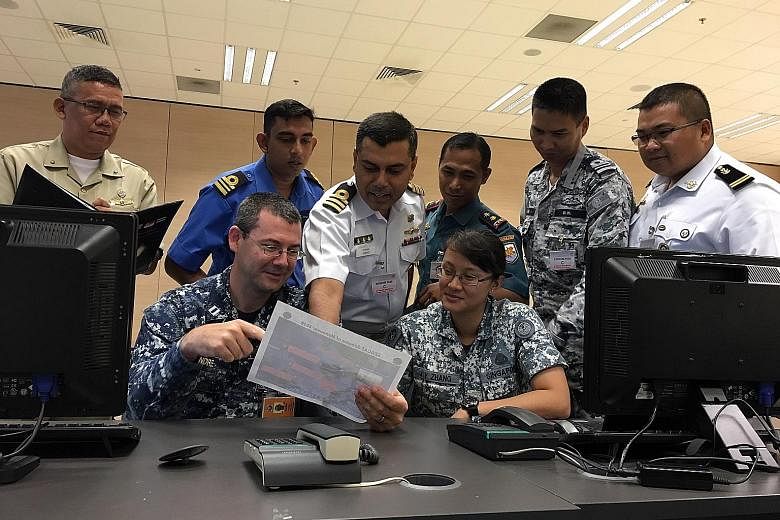Amid growing concerns that pirates today are channelling their loot towards funding terrorist activities, nine countries are coming together to share information and battle the scourge.
Called South-east Asia Cooperation and Training (Seacat), the five-day maritime security exercise co-hosted by Singapore and the United States starts today.
It involves some 300 personnel and 12 vessels, including navy ships, and is the 15th instalment since the annual exercise began in 2002, said Lieutenant-Commander Arlo Abrahamson, a spokesman for the US Seventh Fleet .
It will focus on anti-piracy and search and rescue operations, and target other illicit activities like smuggling, he told The Straits Times. Other participating nations include Indonesia and Malaysia.
Singapore is sending about 60 navy personnel, as well as members of the Police Coast Guard for the exercise. It is also dispatching a patrol vessel named RSS Daring, a Police Coast Guard boat and a maritime patrol aircraft.
Today, an eight-member Singapore team will be boarding a US ship simulating a ship conducting illegal activities in the Strait of Singapore. Boardings happen when naval police notify a vessel at sea that it wants to go on board, Lt-Cdr Abrahamson said. In the real world, boardings may also be forced, he added.
Rear-Admiral Don Gabrielson, Commander of Task Force 73, said at a media briefing that pirates in nearby waters now have access to more sophisticated tools. They can use the Internet to obtain information on where ships are going and what they are doing to identify targets.
They also find it easier to acquire weapons as moving these around a more interconnected world has become easier, he added.
Piracy could also fund activity that eventually becomes terrorism, he said. "Our great fear is that piracy and terrorism can be interlinked at some point as a source of funding. There is great concern about that issue," he said.
There was just one incident of piracy and armed robbery in the straits of Malacca and Singapore in the first half of this year - a five-year low, according to a report by the Regional Cooperation Agreement on Combating Piracy and Armed Robbery against Ships in Asia (ReCAAP) Information Sharing Centre. The number of such incidents had hit a five-year high of 104 last year, up from 48 in 2014.
Rear-Adm Gabrielson, of the US Navy, said exercises such as Seacat build trust between participating countries.
"In the information-sharing world... the more confidence and trust you have in your partners, the more you're going to be willing to share," he added.

